METAL GEAR 2: SOLID SNAKE
Metal Gear 2: Solid Snake is a stealth action game that was written and directed by Hideo Kojima and developed by Konami. It is the second game released in the Metal Gear series and the seventh one chronologically. It was initially released only in Japan for the MSX2 computer on July 20, 1990. The game was re-released as a downloadable game for mobile phones in Japan in 2004. A North American and European version of Metal Gear 2 was released in 2006 as part of Metal Gear Solid 3: Subsistence along with the original Metal Gear.
In the game, Solid Snake must infiltrate Zanzibar Land, a heavily defended territory located in Central Asia, to rescue a kidnapped scientist and destroy the revised Metal Gear D. The game significantly evolved the stealth-based gameplay of its predecessor "in almost every way," introduced a complex story line dealing with themes such as the nature of warfare and nuclear proliferation, and is considered "one of the best 8 bit games ever made." However, the game was not released in the Western world, due to the conflicting release of Snake's Revenge, until 16 years later.
By 1999, the Cold War had thawed, and it seemed nuclear proliferation would soon be a thing of the past. Despite this, all was not well in the world. A series of shocks to the oil market spurred the development of new high-tech energy sources, including fusion power. However, most vehicles still relied on oil. Oil reserves were at a critical low, and the world community was prepared to take drastic measures, either by drilling into sand and shale for more oil, despite the difficulty—or moving on to renewable fuels.
Such steps proved unnecessary when Czech scientist, Dr. Kio Marv, successfully bio-engineered a new species of algae, OILIX, that could produce petroleum-grade hydrocarbons with little expense and effort. Marv was on his way to a demonstration in the United States when he was kidnapped by soldiers from Zanzibar Land. NATO discovered that Zanzibar Land's leaders planned to hold the world hostage by controlling the supply of oil, and some good old-fashioned nuclear brinkmanship, courtesy of a stockpile of nukes.
Solid Snake was brought out of retirement by FOXHOUND's new commander, Roy Campbell, and was sent to Zanzibar Land to rescue Dr. Marv.
For a full summary, see Zanzibar Land Disturbance.
The intro to the game and the instruction manual mention that nuclear weapons had been completely abandoned by the time of the main plot, making Zanzibar Land the world's sole nuclear power. Metal Gear Solid, however, retcons this account by having the current nuclear-armed nations maintain their stockpiles, with the reduction of nuclear weapons via the START-3 Treaty serving a prominent role in the story. Any references to global nuclear disarmament during the time of Metal Gear 2 was omitted from the Previous Operations section of Metal Gear Solid.
FOXHOUND
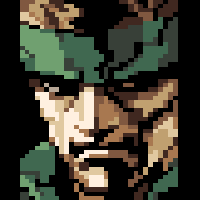
Solid Snake
Special Operations Soldier
"The Man Who Makes the Impossible Possible"
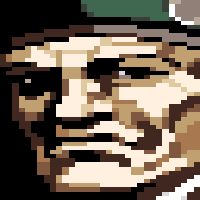
Roy Campbell
FOXHOUND Colonel
"Close friend of Solid Snake, and the biological father of Meryl Silverburgh."
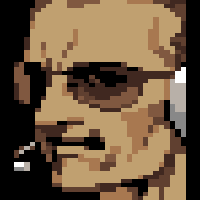
McDonnell Miller
Master Miller
"Subcommander of both the Militaires Sans Frontières and Diamond Dogs."

George Kasler
Possessed intel on every active mercenary in the world
"He provided radio support to Solid Snake."
Zanzibar Land Forces

Schneider
Former leader of the Resistance movement.
"Black Ninja"
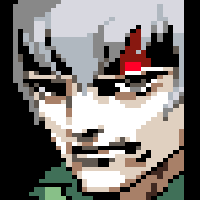
Gray Fox
Mercenary & FOXHOUND Former
"The only operative in FOXHOUND to achieve the codename Fox."
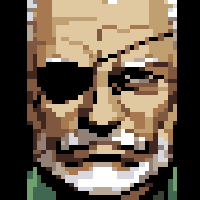
Big Boss
Militaires Sans Frontières
"The Greatest Warrior of the 20th Century."
Other Characters
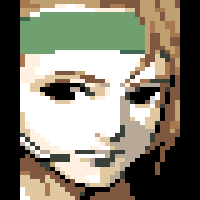
Holly White
American freelance international journalist and undercover CIA agent
"Assisted Solid Snake during the Zanzibar Land Disturbance."

Drago Pettrovich Madnar
Russian Robotics Engineer
"Creator of TX-55 Metal Gear prototype."
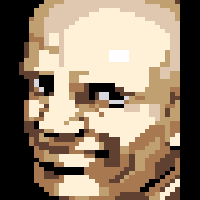
Johan Jacobsen
Zoologist and an international authority on endangered species
"Academic friend of Dr. Drago Pettrovich Madnar during their college years."

Gustava Heffner
A member of the STB (the Czech State Security)
"Assigned to protect Dr. Kio Marv during the Zanzibar Land Disturbance."
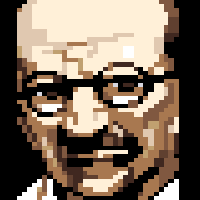
Dr. Kio Marv
Czech scientist
"Responsible for the creation of the genetically-modified oil-producing microbe, OILIX."
In 1986, Hideo Kojima joined Konami as a planner, in which he had trouble fitting in with the company. In particular, he joined so he could make arcade and Famicom games (the former due to being inspired by Japan's arcade buildings), and was not fond of the MSX consoles especially regarding programming and hardware limitations, yet was required to work for the MSX1 due to it being the only department within Konami to have planners. The sound director Kazuhiko Uehara gave a similar story regarding how he was hired. Despite working on his game, Last Warld, for six months, Konami ultimately decided to cancel it. As a result of the cancellation, Kojima was the only one in the company at the time who did not have one of their games released. This led other developers within the company to tell him, "at least complete one game before you die." Afterwards, he was given another game plan. This particular game plan was about war, and was partly inspired by the Capcom game Commando, with Konami requesting he make a similar game, only for the MSX consoles. Due to the hardware limitations of the MSX2, Kojima decided to develop a game where the main objective was to avoid the enemy rather than fight them directly (similar to the film The Great Escape). This decision was questioned by his bosses. This, along with the cancellation of his previous game, nearly led Kojima to leave Konami. However, one of his bosses encouraged him to stay and convinced him to continue the development of the game. Kojima did, and the game, which became Metal Gear, was released in Japan for the MSX2 in July 1987.After the success of the Nintendo Entertainment System version of Metal Gear had in the Western market, especially in North America where it sold over a million copies, Konami commissioned the development of a sequel for the NES made specifically with the Western market in mind without the consent of Hideo Kojima.
Kojima, who was not planning on making a sequel to Metal Gear, was unaware of the development of the game until he ran into a member of the Snake's Revenge development staff during a train ride in Tokyo. The developer told Kojima about the game. He then requested Kojima to develop a true sequel. By the end of the train ride, Kojima had already developed the basic storyline for the entire game. The next day, he went to his boss at Konami with a game plan, and was given the go-ahead to make Metal Gear 2: Solid Snake. A similar story was also stated in the August 1990 issue of MSX Magazine, although the person involved at Konami was never identified, and it indicated they didn't even think of developing a sequel at all to Metal Gear until someone stated they'd like to play one.
Since the early development of the game, Kojima intended to expand the search function of soldiers to beyond a single screen, in order to further challenge players in planning strategies regarding the entire map. In addition, all the soldiers were designed to operate under their own schedule, with Kojima citing it as being similar to a simulation game. He also intended to avoid using a background music as much as possible in order to emphasize auditory senses among the enemy, such as hearing footsteps. He also added in a crawling ability to give a more 3D gameplay sense to an otherwise 2.5D game as well as add more depth to the gameplay mechanics. He also added in various alert levels to the soldiers in the game.
Overall, he did all of these in order to make the infiltration experience even more realistic than before. He also intended to emphasize the survival aspect by cobbling together various items to create new equipment and weapons. Furthermore, he intended to have the player's actions be counteracted by various obstacles, including enemies, bosses, and traps, as well as broadening the worldview of the game with enriching stories, settings, and events to cultivate new players. For marketing, Kojima also intended to use a form of 3D via modelling to appeal to people outside the gaming market, such as anime fans and modelers. In addition, they wished to include cutscenes into the game, viewing it as necessary for an "experience game" like Metal Gear 2. They also made sure to create the game on a 4 megabit cartridge specifically to allow for cutscenes, as they were earlier forced to remove the cutscenes from Metal Gear due to insufficient memory.
As one of the goals for creating the game involved pursuing realism, the development team for the game spent various days and nights gathering as much reference materials as possible for everything they could think of, including movies, books, as well as model guns, with it even going as far as to have people in combat fatigues and meeting an author who was a former Green Beret. The team even went as far as to seclude themselves in a mountain in order to play a survival game with infrared guns. Kojima when reflecting on this admitted that their work became a hobby and their geeky life became the game's simulation.
In addition, all the equipment that was photographed for the game box and manual had belonged to various members of the development staff, and the crawling characters were derived in design from staff members who were acting out the poses. The game also ran into development problems when the entire development team for the game was forced to put the game on hold in order to lend support for the development team of SD Snatcher after the latter game's development progress had been compromised, with there even being rumors that Metal Gear 2 would end up halted altogether under those conditions. The game ultimately resumed development after SD Snatcher was completed without any incident, with it being released shortly afterwards. Kojima when reflecting on this development conceded that this ultimately allowed for a cool-down period to look into the titular character more calmly. He also indicated that the ending sequence was meant to show their emotion towards the MSX system due to it ultimately being the last game they worked on for that console.
Furthermore, because Shoulder Nishio, the mecha designer for the game, constantly exceeded the ROM limit while trying to implement various aspects, several things ultimately had to be cut from the game, such as the boss character Maniac Cop, a mass-produced Metal Gear G, the Goliath tanks, wires, searchlights, flying soldiers, and piranhas, and that they had run into similar ROM exceeding problems throughout development. On a similar note, they also added the camouflage mat as a result of a glitch they ran into during development. They originally planned to not have any sound, and have a heartbeat sound effect throughout the game. However, limitations in the sound processing systems had them cut the concept out save for when Snake was traveling through the ventilation shaft. The story also ended up having to be rewritten due to events that occurred that had not been anticipated during development, such as the Tienanmen Square Protests, the Romanian Revolution, and the collapse of the Berlin Wall, which was slated in the game to occur in the mid 1990s, and subsequent Reunification of Germany.
The initial story plan for Metal Gear 2 would have entailed a renegade American special forces unit hijacking a nuke on American soil, although it was nixed largely because it was deemed too unrealistic. However, said plot point would eventually be used for the plot of Metal Gear Solid, and to a lesser extent Metal Gear Solid 2: Sons of Liberty and Metal Gear Solid: Portable Ops, due to the then-rapid and unexpected changes to society as a result of the ending to the Cold War.
The game was released exclusively in Japan for the MSX2 in 1990. Due to this exclusivity, Snake's Revenge became the Metal Gear sequel in the Western market. A fan translation of Metal Gear 2 would later be produced. In the Konami's Room section of the July 1993 issue of the Japanese gaming magazine Beep! Mega Drive, three Konami developers were asked which game they wished to be ported on the Sega Mega Drive, with their answering Metal Gear 2. A later issue of the same magazine also had a poll asking which game should be ported, with Metal Gear 2 being ranked first among the votes, followed by Snatcher, the then-popular STG game XEXEX, and the TwinBee series.
The plot summaries of the first two games were included in Metal Gear Solid under the Previous Operations section. Metal Gear 2 would finally see an official English release 16 years later as a component of Metal Gear Solid 3: Subsistence.

